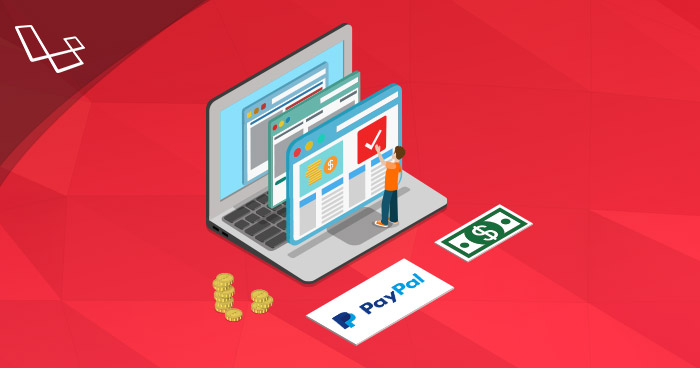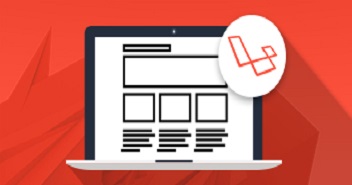
If you are operative in the e-commerce circuit, then you must have known the importance of online transaction. As it is the most viable and fastest way to settle payments anywhere in the world. And because of evolving internet technology, today anyone can easily buy or sell products and can settle payments with online transaction all around the world.
But online transaction brings high risks of serious security threats also. Therefore robust security mechanism for online payments is required to avoid potential malicious attempts. That is where the importance of Laravel Paypal payment gateways comes into play. As these gateways helps businesses to focus and capitalize on the benefits of online transactions, while keeping their customers and systems secured from the external threats.
Read More About: Create Laravel Ecommerce Store With Aimeos
Payment Gateway
Payment gateway is a typical e-commerce service that helps process credit card payments for online businesses. The main functionality of Payment gateways is that they facilitate online transactions by transferring confidential funds information between payment portals and front end funds processors/banks.
How it works?
The basic responsibility of payment gateways is to authorize funds transaction between clients and merchants. Below are the intrinsic steps on how payment gateways works:
Step 1: The process starts when a customer first visits the website and places an order for the respective products through checkout button.
Step 2: Next the merchant will send the details of that order to the payment gateway and then after the transaction is sent to the issuing bank, so that it can authorize the transaction.
Step 3: Once completing the authentication process of transaction, the customer’s issuing bank approves or declines the transaction based on the available funds in the customer’s account.
Step 4: Then after the payment gateway sends that message to the merchant.
Step 5: The bank settles the transaction amount with the payment gateway and the payment gateway settles the money with the merchant.
Nothing as Easy as Deploying Laravel Apps on Cloud
With Cloudways, you can have your PHP apps up and running on managed cloud servers in just a few minutes.
In the world of e-commerce, Laravel payment gateways plays a vital role in settling up online transactions between customers and merchants. Because Payment gateways are solely responsible for the authorization of that transaction. Hence are developed in a very protective manner to cover all the possible security checks. Currently PayPal, Skrill, Stripe and Square are the popular payment gateway methods. Because their payment security mechanisms and reliable services are rated top among the list.
So in this article, i will demonstrate how to deploy PayPal payment gateway in a Laravel app to make its funds transaction safe and secured.
You Might Also Like: Top US Payment Gateways for Ecommerce Stores
Configure PayPal in Laravel application
For Laravel payment gateway integration, first install the PayPal package in your app using the composer command. Open your SSH terminal and paste the following command under public_html/paypal_project.
composer require paypal/rest-api-sdk-php
Create PayPal Account
Visit Developer.paypal.com to create your business account, so that you can buy/sell products easily over the internet and transfer funds to your account.
Next create a Paypal developer mode and create a sandbox account to get important credentials like client_key and secret key, to test its integration with your Laravel app.

After creating your app successfully on the hosting for Laravel project, click on it and it will show you client_id and secret keys. Copy these credentials and paste them in your .env file.
PAYPAL_CLIENT_ID= PAYPAL_SECRET= PAYPAL_MODE=sandbox
Next, create a new file with the name paypal.php in /config directory and place the following code in the file.
<?php
return [
'client_id' => env('PAYPAL_CLIENT_ID',''),
'secret' => env('PAYPAL_SECRET',''),
'settings' => array(
'mode' => env('PAYPAL_MODE','sandbox'),
'http.ConnectionTimeOut' => 30,
'log.LogEnabled' => true,
'log.FileName' => storage_path() . '/logs/paypal.log',
'log.LogLevel' => 'ERROR'
),
];
Setup Migration Product
Now create and setup database migration. Paste the following command in the SSH terminal:
php artisan make:migration create_products_table
After successfully creating migration, change the following code in migration file.
use Illuminate\Database\Schema\Blueprint;
use Illuminate\Database\Migrations\Migration;
class CreateProductsTable extends Migration
{
public function up()
{
Schema::create('products', function (Blueprint $table) {
$table->increments('id');
$table->string('name');
$table->text('details');
$table->float('price');
$table->timestamps();
});
}
public function down()
{
Schema::drop("products");
}
}
After that change, paste the following command on ssh terminal php artisan migrate.
You Might Also Like: Why Use Laravel Ecommerce Packages Instead of Read-Made CMSs?
Product Model for Payment
After successfully configuring all credentials for PayPal API, now let’s create a model file with the name of Product and paste the below code in it
namespace App;
use Illuminate\Database\Eloquent\Model;
class Product extends Model
{
public $fillable = ['name','details','price'];
}
Setup Migration Payment
Now to create and setup database migration, copy the below command and paste it into the SSH terminal:
php artisan make:migration create_payment_table
Paste the below code for creating a table for payment.
use Illuminate\Database\Schema\Blueprint;
use Illuminate\Database\Migrations\Migration;
class CreatePaymentsTable extends Migration
{
public function up()
{
Schema::create('payments', function (Blueprint $table) {
$table->increments('id');
$table->string('item_number');
$table->string('transaction_id');
$table->string('currency_code');
$table->string('payment_status');
$table->timestamps();
});
}
public function down()
{
Schema::drop("payments");
}
}
Payment Model
As you have successfully created migration for payment, now let’s create model for payment by pasting the below code in your payment model namespace App;
use Illuminate\Database\Eloquent\Model;
class Payment extends Model
{
public $fillable = ['item_number','transaction_id','currency_code','payment_status'];
}
PayPal payment Form View
You can add any form here with the way you want. While for the purpose of View, the form has 1 input field to enter the amount and a button also to complete the submission.
<form action="https://www.sandbox.paypal.com/cgi-bin/webscr" method="post" name="frmTransaction" id="frmTransaction">
<input type="hidden" name="business" value="{{$paypal_id}}">
<input type="hidden" name="cmd" value="_xclick">
<input type="hidden" name="item_name" value="{{$product->name}}">
<input type="hidden" name="item_number" value="{{$product->id}}">
<input type="hidden" name="amount" value="{{$product->price}}">
<input type="hidden" name="currency_code" value="USD">
<input type="hidden" name="cancel_return" value="http://demo.expertphp.in/payment-cancel">
<input type="hidden" name="return" value="http://demo.expertphp.in/payment-status">
</form>
<script>document.frmTransaction.submit();</script>
Routes
After creating the view successfully, now open the routes/web.php file and update routes for payment application in it.
Route::get('payment-status',array('as'=>'payment.status','uses'=>'PaymentController@paymentInfo'));
Route::get('payment',array('as'=>'payment','uses'=>'PaymentController@payment'));
Route::get('payment-cancel', function () {
return 'Payment has been canceled';
});
PayPal Payment Controller
Now create a new controller to write and manage all the PayPal related PHP stuff. Just paste the below shown command to create a payment Controller.
php artisan make:controller PaymentController
The above command will create a new controller at /app/http/Controllers with the name PaymentController.
<?php
namespace App\Http\Controllers;
use Illuminate\Http\Request;
use App\Product;
use App\Payment;
class PaymentController extends Controller {
public function payment(Request $request){
$product=Product::find($request->id);
return view('payment',compact('product'));
}
public function paymentInfo(Request $request){
if($request->tx){
if($payment=Payment::where('transaction_id',$request->tx)->first()){
$payment_id=$payment->id;
}else{
$payment=new Payment;
$payment->item_number=$request->item_number;
$payment->transaction_id=$request->tx;
$payment->currency_code=$request->cc;
$payment->payment_status=$request->st;
$payment->save();
$payment_id=$payment->id;
}
return 'Pyament has been done and your payment id is : '.$payment_id;
}else{
return 'Payment has failed';
}
}
}
Payment method are used to render form of payment gateway where selected product data is passed to buy.
After successful redirection from paypal payment gateway we fetch response data in payment Info method and according that we update payment table with transaction id.
You Might Also Like: Working With Controllers in Laravel
PayPal Payment Status
In order to notify the users about the status of the payment whether it is successfully completed or failed, following code is executed to output the status of the payment.
Wrapping up!
So in this article, i have demonstrated how to implement Laravel PayPal payment gateway in web applications. As implementing the Laravel PayPal integration, will make the app secured for funds transaction and will allow site owners to securely manage their capitals. The article covers the complete installation and step by step integration of PayPal payment gateway with the Laravel app. So that you can acquire thorough knowledge of its integration and use in the platform.
Still if you have any further queries regarding this article, you can feel free to ask your questions in the comments section below.
Mansoor Ahmed Khan
Been in content marketing since 2014, and I still get a kick out of creating stories that resonate with the target audience and drive results. At Cloudways by DigitalOcean (a leading cloud hosting company, btw!), I lead a dream team of content creators. Together, we brainstorm, write, and churn out awesome content across all the channels: blogs, social media, emails, you name it! You can reach out to me at [email protected].


